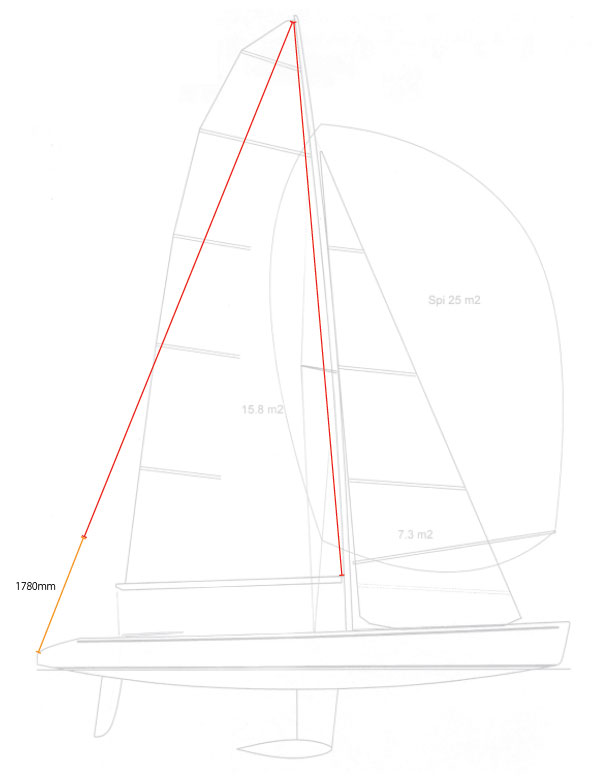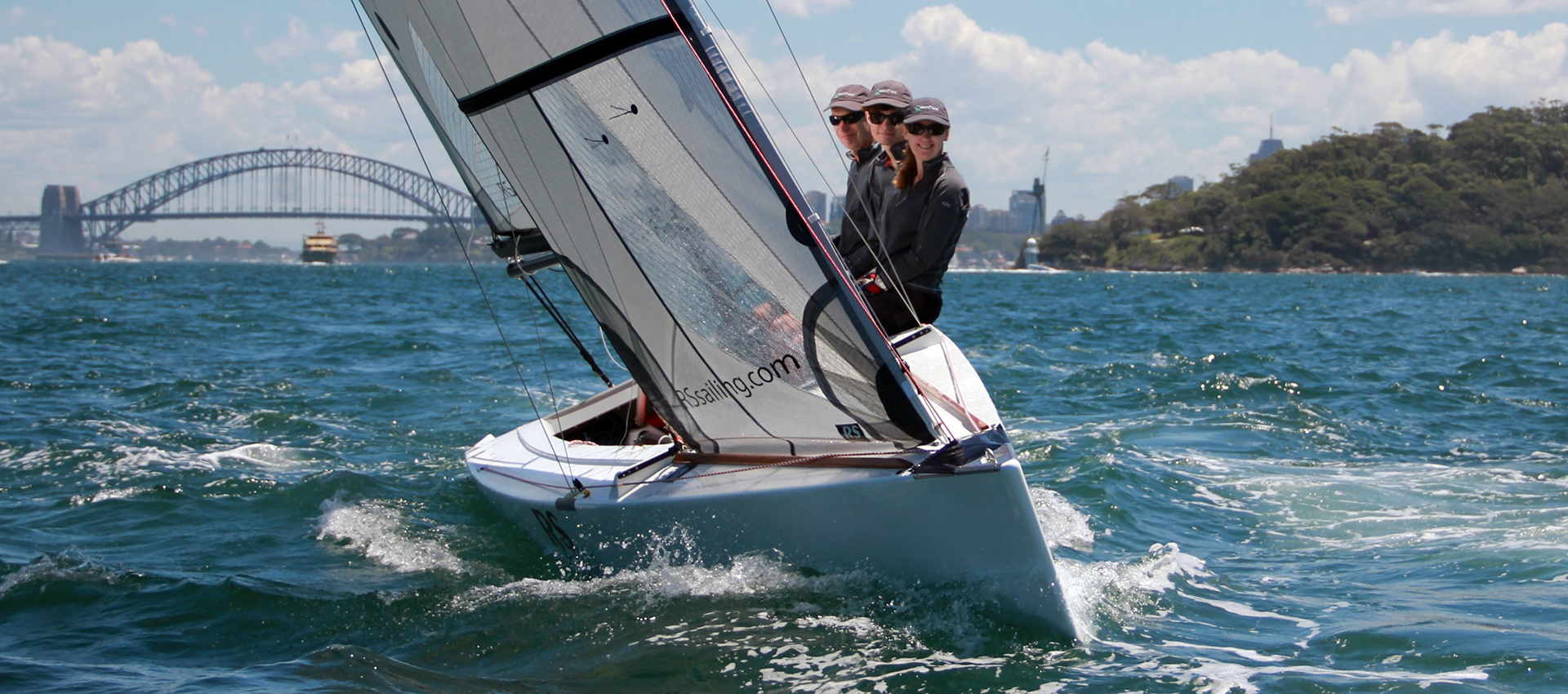RS Elite Tuning Guide
The following data are intended as a guide only and are a good starting point from which to make your own adjustments.
Rig adjustment
Think of the shrouds and forestay in this way
- Main shrouds adjustment controls the rake
- Forestay adjustment controls the rig tension
- Lower shrouds adjustment controls the pre-bend in the mast
Rig tension
Measured on main shroud:
| Light wind setting | 240 kg | 19 on Loos Pro Gauge |
| Medium wind setting | 400 kg | 26 on Loos Pro Gauge |
| Heavy wind setting | 600 kg | 30 on Loos Pro Gauge |
To calibrate either mark the forestay with tape above the tack bar sheave at Heavy setting – then visualise how far up from the sheave the tape is with the tension eased to Medium and Light settings, or mark the rig tension control line where it emerges from the back end of the foredeck into the cockpit at all three settings.
Mast rake
Measured with tape measure on main halyard to top of transom: 9450mm with rig tension on medium setting.
It is often tricky to hoist a tape measure to the top of the mast so, with the main shrouds rig tension set at 26 and lower shrouds set at 14 on Loos Pro rig tension gauge, lock the main halyard off at gooseneck height. Then take the locked main halyard out to the back of the boat and measure from the end of the main halyard to the top of the vertical face of the transom.

Mast pre bend
Measured at the spreaders:
- 80mm minimum
- 100mm in wind over 20 knots
Upwind settings
Attach jib sheet to second hole from the top on the jib clew board. Use sufficient jib cunningham tension to remove creases / sag between hanks.
Sail upwind and sit to leeward to check jib twist:
- Too little twist – drop jib down the forestay by easing halyard and tightening jib cunningham
- Too much twist – raise jib by easing tightening halyard and then reset the cunningham (you need to ease cunningham and sheet to do this).
- If you change the rig tension significantly then you need to reset the jib height for correct twist.
- If you ease the rig tension significantly then you must also ease the jib cunningham!
| Wind speed | 0-5 knots | 6-10 knots | 11?15 knots | 16-20 knots | 21+ knots |
| Rig tension | Light setting | Medium setting | Heavy setting | Heavy setting | Heavy setting |
| Jib clew board | Second hole from top | Second hole from top | Second hole from top | Second hole from top | Second hole from top |
| Jib traveller | 75mm inboard from toe-rail | 75mm inboard from toe-rail | In line with toe-rail | In line with toe-rail | At outboard end of track |
| Jib cunningham | Just enough tension to remove any sagging between hanks | Just enough tension to remove any sagging between hanks | Just enough tension to remove any sagging between hanks | More tension so luff is firmly tight | More tension so luff is firmly tight |
| Mainsheet traveller | 200mm to windward | 200mm to windward | On centre line | 200mm to leeward | 300mm to leeward |
| Main outhaul | On until sail foot is close to boom along length - but not tight | On until sail foot is close to boom along length - but not tight | On until sail foot is close to boom along length - but not tight | On tight - sail will start to develop folds along the foot | On tight - sail will start to develop folds along the foot |
| Main cunningham | None | None | Pull on to remove horizontal creases in luff | Firm tension to blade out sail head | Pull on hard to open sail head |
| Kicker | No tension - just remove slack | Light tension | Firm tension | Pull on hard | Pull on very hard |
Downwind settings
- Ease the jib traveller right down the track.
- Ease main outhaul, cunningham and kicker.

